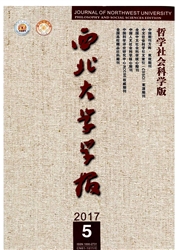

 中文摘要:
中文摘要:
区隔,是符号学的意义理论之前提。靠了区隔,意识才得以认识世界,区隔就是意向性造成的事物“对象变形”。有三种主要的区隔方式:首先是非匀质化,事物必须与“无意义”部分隔开,才构成意义对象;第二种是文本化,文本是认识者组织意义的必需;区隔框架是人处理世界信息的最基础的模板,是建构社会性意义活动必用的策略。但是区隔本身并不是纯粹的形式操作,区隔是有方向性和倾向性的,此时意义的解释诱导作用就会显现。
 英文摘要:
英文摘要:
Segregation, via which consciousness cognizes the world, is the premise of semiotic studies on meaning generation. It is the "transformation" of things caused by intentionality. Segregation can be classified into three modes: the first one is heterogenization: to become objects, things have to be distinguished from the non - meaningness ; the second is textualization, since text is the foundation of meaning construction ; and the third one is frame - segregation, which is the basic mode of human consciousness processing the information of actual world. Yet, segregation is not just a formal operation; instead, it is intentional, inclinational, and in- fluenced by the heuristic mechanism of meaning interpretation.
 同期刊论文项目
同期刊论文项目
 同项目期刊论文
同项目期刊论文
 期刊信息
期刊信息
